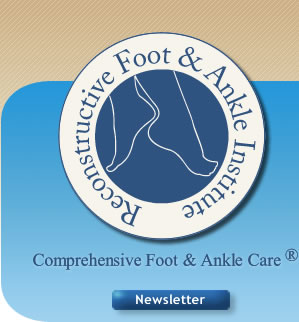Morton's Neuroma/Neuroma
![]() NBC25 Medical Corner Morton's Neuroma — Dr. Motran »
NBC25 Medical Corner Morton's Neuroma — Dr. Motran »
A neuroma is a benign fibrous nerve “tumor” that is caused by the rubbing of 2 bones on the nerve, thereby pinching the nerve. A ligament can also pinch the nerve. This constant friction or rubbing causes the nerve to enlarge and eventually pain ensues. Abnormal bone structure may contribute to the cause and certain shoes can aggravate the condition. High heeled shoes or shoes that are too narrow can make the neuroma worse.
A Morton’s Neuroma usually occurs between the 3rd and 4th toes. Initially, the symptoms are numbness and tingling in the toes followed by moderate pain that eventually progresses to severe pain that may shoot up and down the leg. Sometimes it feels like you are walking on a pebble or your socks are bunched up under your toes. Often numbness or tingling occurs in toe 3 and 4 on the foot.
A neuroma should be treated conservatively before surgical intervention is warranted. Injections using alcohol decrease the pain of the neuroma. Approximately 6-10 injections may be needed to relieve the pain which can be curative and preclude any surgical procedures. The injections are performed every 11 days with most people receiving relief between injection 6 and 10, however, some get relief after 1 or 2 injections. Other forms of conservative treatment include wider shoes or pads under the toes. Orthotics can help support the foot arch and decrease pressure on the neuroma. An Air Heel can also decrease pain in the foot. Tape may be applied to your foot for relief of pain. The tape can stay on for up to a week and can get wet in the shower. If it bothers you, take it off and wash your foot. If the tape feels good leave it on and take it off prior to your next appointment.
If the injections don’t completely relieve the pain then an outpatient surgical procedure is performed where the nerve is removed. Ninety five (95%) to 98% of people get better with the shots. If surgery is needed, there is no need for general anesthesia or overnight hospitalization. The surgery is usually performed under local anesthesia or mild sedation, thereby maximizing your comfort and safety. Following the surgery, you may go home to recover comfortably in your own familiar surroundings. You may walk on the foot operated on immediately after surgery, and recovery is usually 2-3 weeks with very little time off from work.
